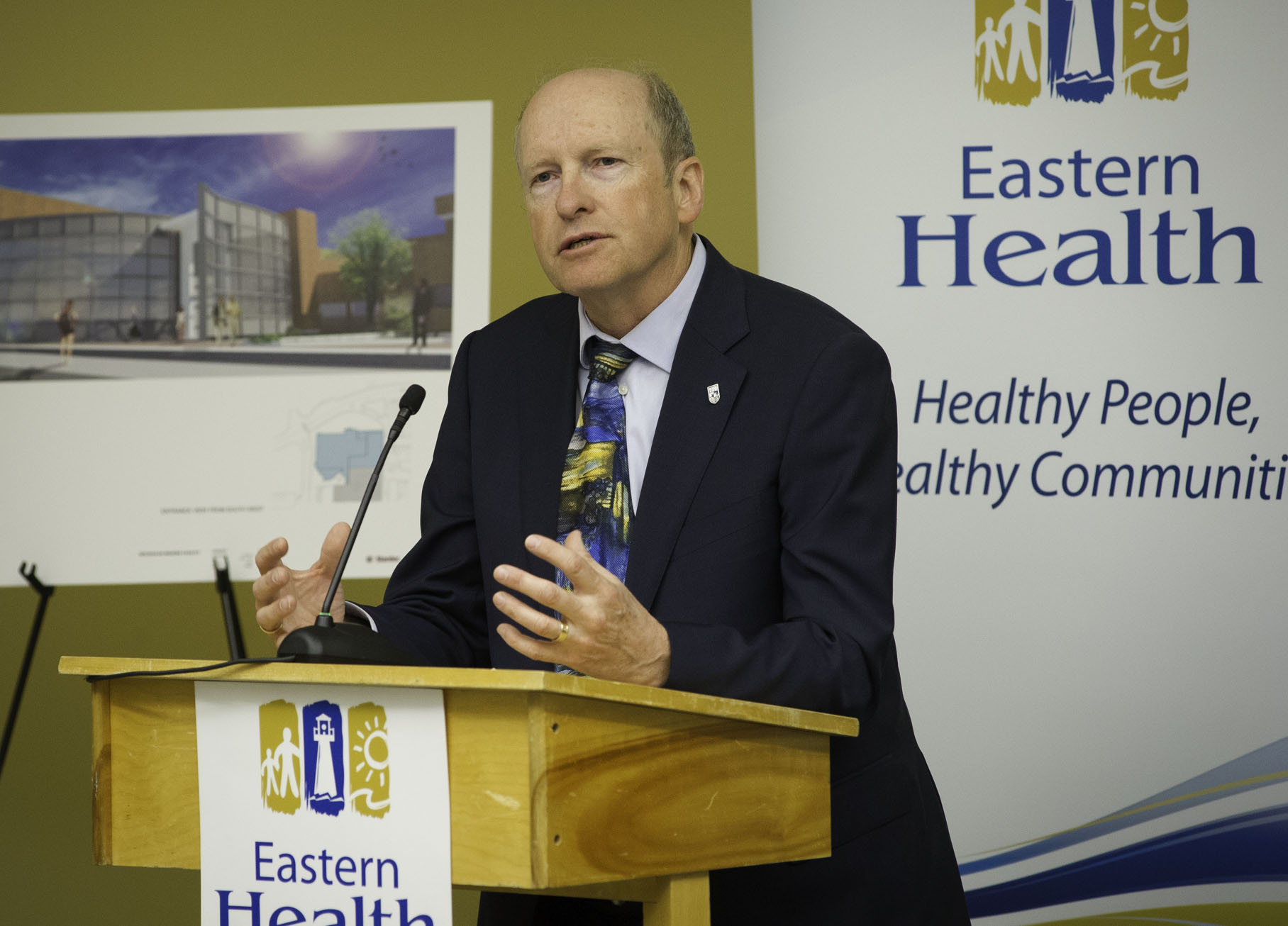Memorial partners with Eastern Health on Molecular Imaging Program
 An update was provided July 11 on the new Molecular Imaging Program that will provide the people of Newfoundland and Labrador with state-of-the-art technology to greatly improve the diagnosis and treatment of certain illnesses, such as cancer.
An update was provided July 11 on the new Molecular Imaging Program that will provide the people of Newfoundland and Labrador with state-of-the-art technology to greatly improve the diagnosis and treatment of certain illnesses, such as cancer.
“The Faculty of Medicine and Memorial University are pleased to partner with Eastern Health to fully capitalize on this significant and strategic investment by the provincial government,” said Dr. James Rourke, Faculty of Medicine. “The best health care requires up-to-date facilities and excellent health care professionals who are informed by research and education. This project addresses all of these requirements.”
Susan Sullivan, minister of Health and Community Services, said the provincial government is investing approximately $40 million to provide this new diagnostic testing as well as consolidate nuclear medicine services in one location at the Health Sciences Centre.
“With the addition of a positron emission and computerized tomography scanner to Eastern Health’s Molecular Imaging Program, we are making an important and essential investment in the health of our residents,” said Minister Sullivan.
A positron emission and computerized tomography (PET/CT) scanner is a vital diagnostic tool most commonly used to detect, assess and treat cancers. This technology is also used for the assessment of cardiac disease and diagnosis of some neurological disorders.
“The Molecular Imaging Program will provide our patients with access to leading-edge medical equipment that will enhance health-care delivery in Newfoundland and Labrador,” said Vickie Kaminski, president and CEO of Eastern Health. “With the introduction of a PET/CT scanner, patients with certain illnesses will no longer have to travel outside the province to receive this specialized procedure.”
Dr. Rourke noted that the heart of the molecular imaging facility is the cyclotron that can generate an array of radioisotopes for biological and physical investigations. Biomedical science investigations will begin within a specialized research laboratory located near the cyclotron.
For this specialized lab, researchers at Memorial are seeking a major enabling investment to acquire a specialized pre-clinical CT scanner and a high-field pre-clinical spectrometer.
“This investment, together with that in the cyclotron, offers the potential for excellence, nationally and internationally,” said Dr. Rourke. “This is a wonderful opportunity and Memorial’s scientific community is keenly interested in the capabilities that this laboratory can offer.”
Dr. Peter Hollett, clinical chief of nuclear medicine at Eastern Health, said operating a PET/CT scanner within this province provides a better chance at fighting various chronic illnesses.
“A PET/CT scan would be able to tell a physician whether their patient’s chemotherapy is working far in advance of any other imaging techniques, it will allow physicians to monitor blood flow in the heart more effectively and will provide a means to positively diagnose Alzheimer’s from other types of dementia, which is something we could previously not do in this province.”
A tender to begin realignment of Clinch Crescent to accommodate the project at the Health Sciences Centre was recently awarded. This realignment will be the first phase of development that will include the creation of a new entrance to the Janeway Emergency Department and construction of a new facility to house the Molecular Imaging Program next to the Dr. H. Bliss Murphy Cancer Centre.
In addition to providing Eastern Health and Memorial University with additional research and teaching opportunities, the Molecular Imaging Program will assist with recruitment efforts for physicians. More information about the program can be found on Eastern Health’s website at www.easternhealth.ca.
Development of the facility is anticipated to begin later this year. It is expected that the first PET/CT scan will be offered by spring of 2015 and the Molecular Imaging Program should be in full operation by 2016.
Public information sessions to provide information about the Molecular Imaging Program will begin this September. Because the medical cyclotron creates medical isotopes, which are small quantities of radioactive material used to diagnose and determine treatment for disease, the regulatory processes are extensive and involve two principal federal regulatory agencies – the Canadian Nuclear Safety Commission and Health Canada. Ensuring the public is informed about the cyclotron is part of the licensing requirements of the Canadian Nuclear Safety Commission.